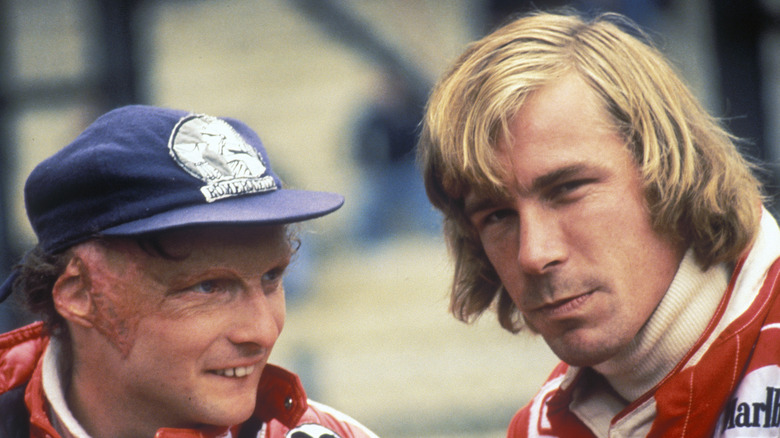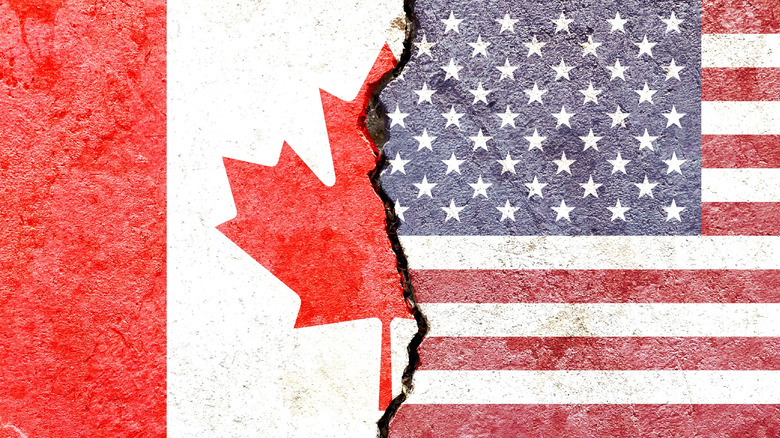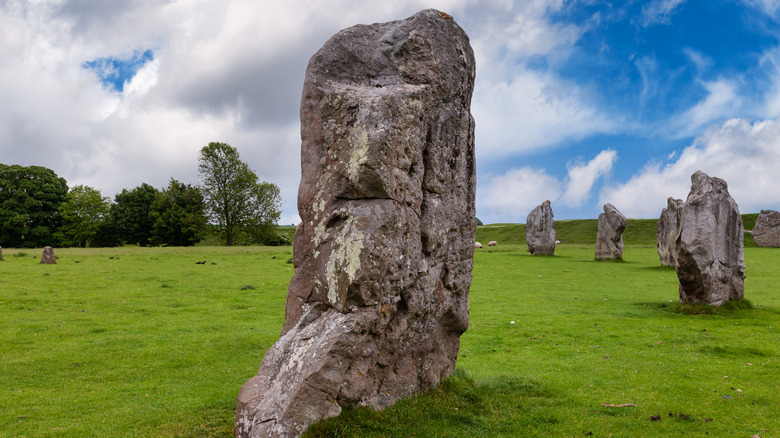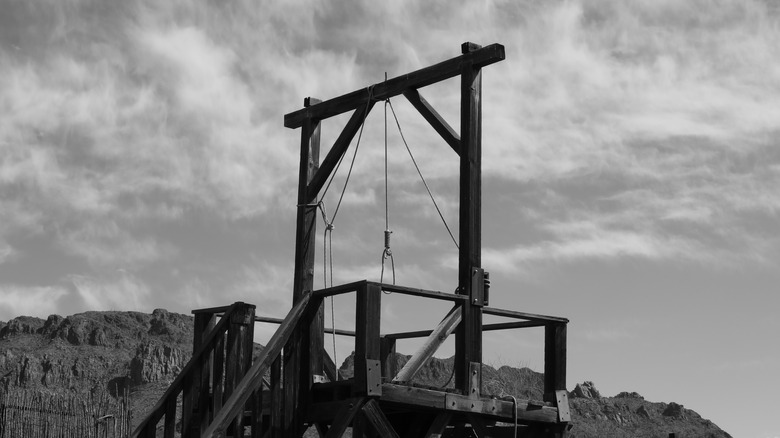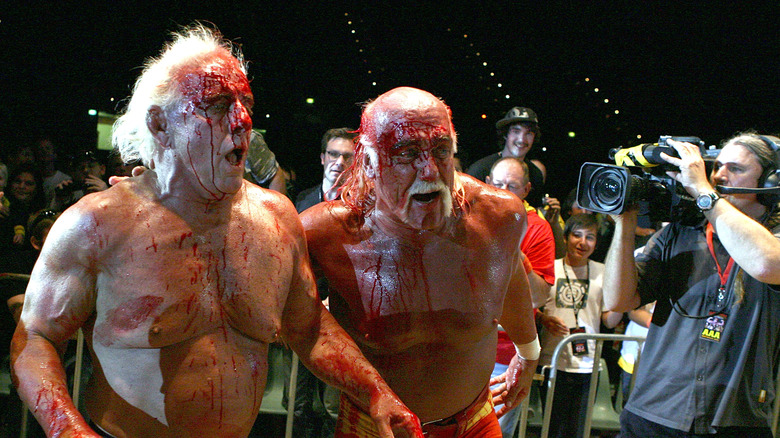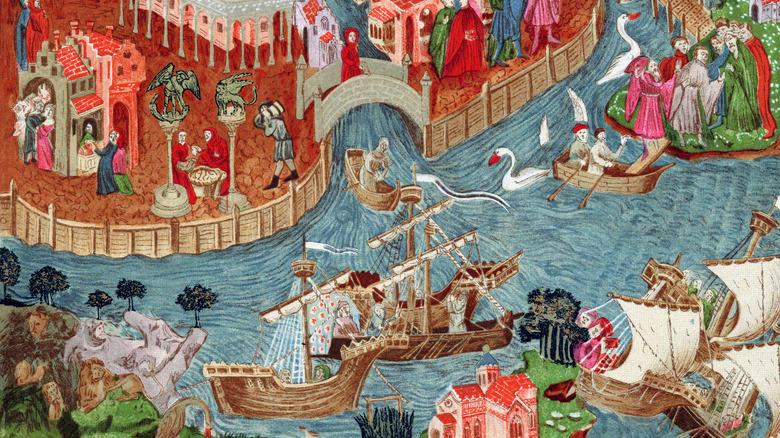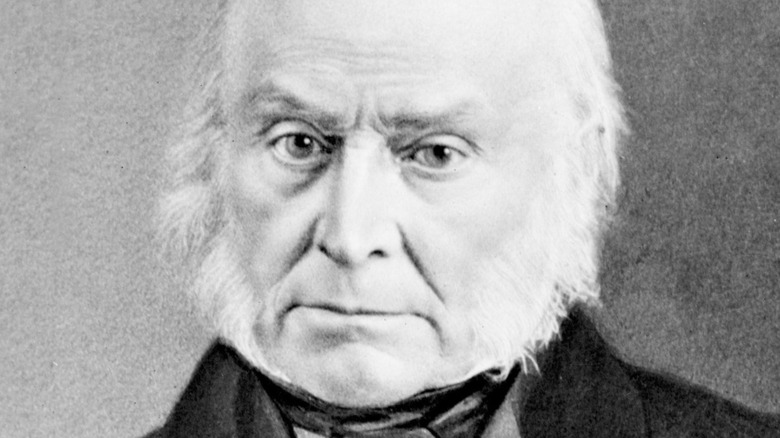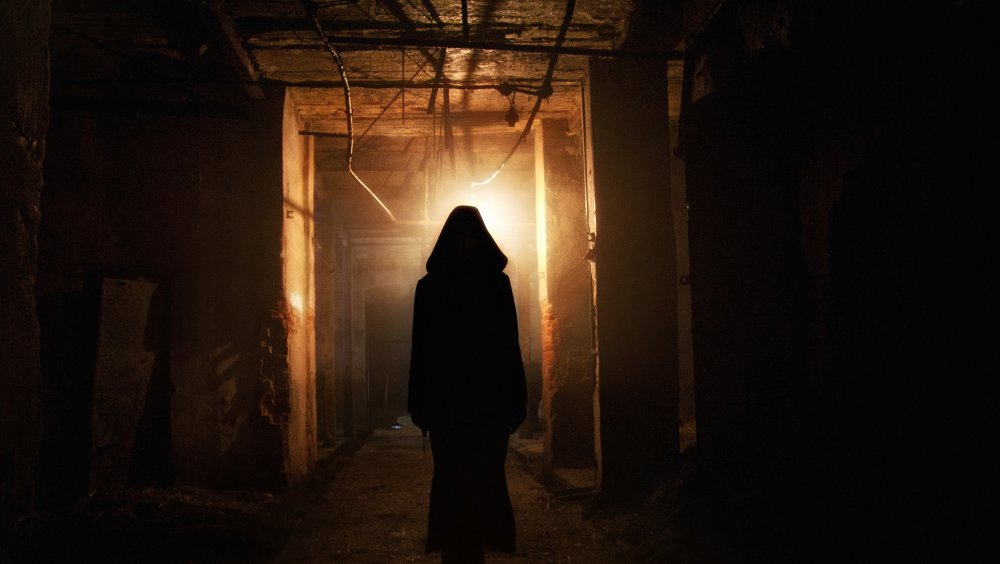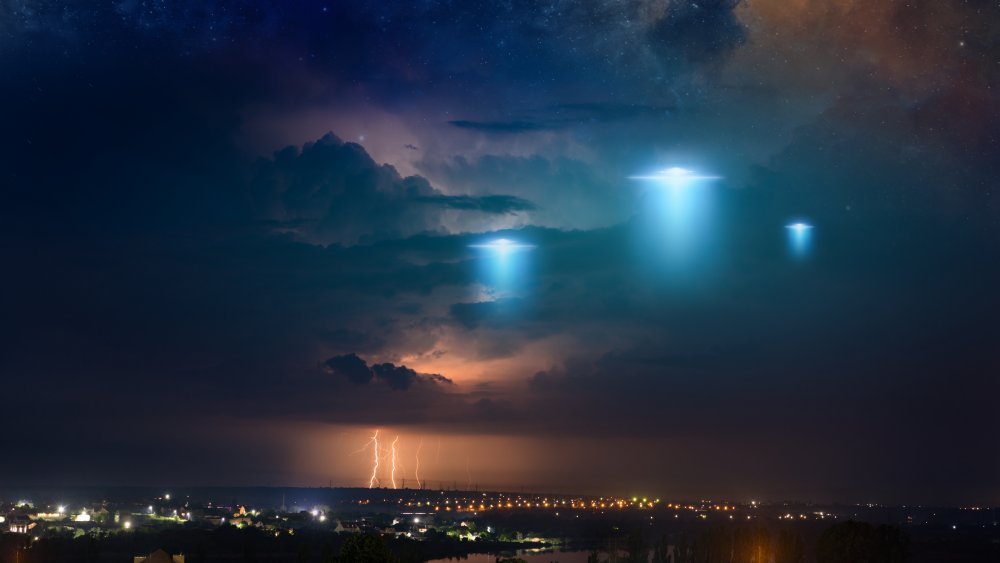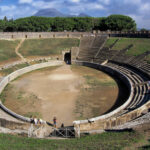
Long Gone But Not Forgotten: Abandoned Stadiums Across the Globe!
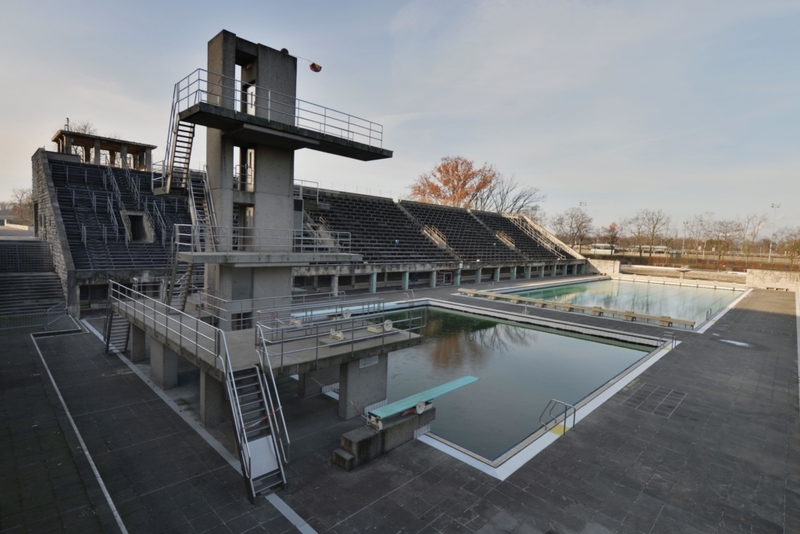
With ripped seating, crumbling interiors and weeds shooting through the concrete, these abandoned stadiums are a symbol of Western excess and how such a fleeting event can take over a city before it instantly disappears. Take a look at some of the world’s abandoned stadiums.
Olympic Aquatics Stadium (Rio de Janeiro, Brazil)
Just three short years ago the world witnessed the 2016 Summer Olympics, which were hosted in Rio de Janeiro, Brazil. A huge turning point in the history of the Olympic Games, this was the first time that a South American nation hosted the event. Fun fact: the summer Olympics in Rio were actually hosted during a time the country was experiencing winter. Despite the great honor and excitement of a developing country hosting such a prestigious event (just the second time since Mexico City in 1968), there were some worries and doubts. Leading up to the games, fans and officials were worried about the Zika virus epidemic, as well as the pollution, which was found in Guanabara Bay, an area in which many events were to be held. The good news was that it was all fine, and no one choked on a plastic bag or anything, but it definitely made tourists reconsider visiting at the time.
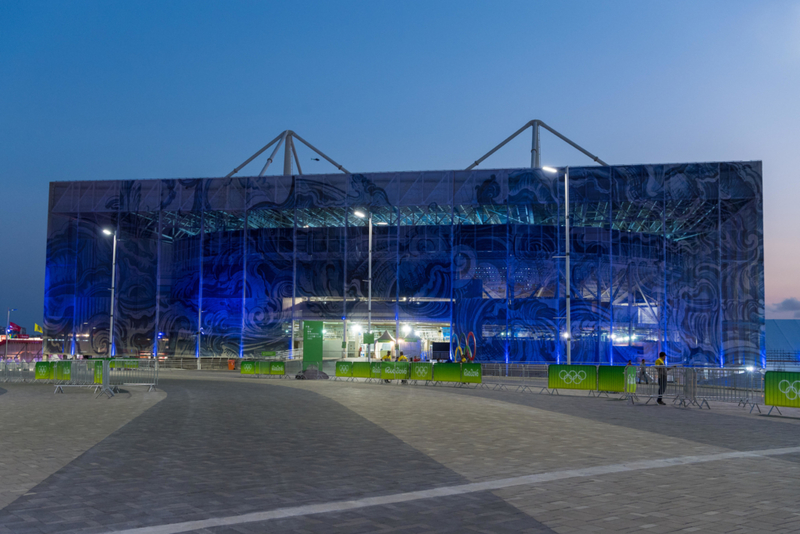
Winning seven gold medals, Brazil did pretty well for themselves, but there were some issues after the games, considering the many, and expensive venues which were specially constructed for the event. Such is the case of the Olympic Aquatics Stadium, which was looted and left very empty and vacant. So much for the “legacy” promised by organizers – the economic
Faliro Olympic Beach Volleyball Centre (Athens, Greece)
When the Olympics returned to Athens in 2004, it was kind of a big deal. Kinda like the Prodigal Son returning. Yeah, pretty big. Considering Greece was the birthplace of the Olympic Games, it quadrupled the pressure of hosting – Greece wanted to wow the world, and host games that would go down in the history books! However, what was supposed to rock the resting places of Ancient Greek athletes, became well… a catastrophe. The 2004 games, despite being considered a success on the surface: great competition, great venues, and no detracting events. The Greeks sheepishly finished 15th place in the overall medal count. Usually, a host nation dominates, alas, not the case for the Greeks!
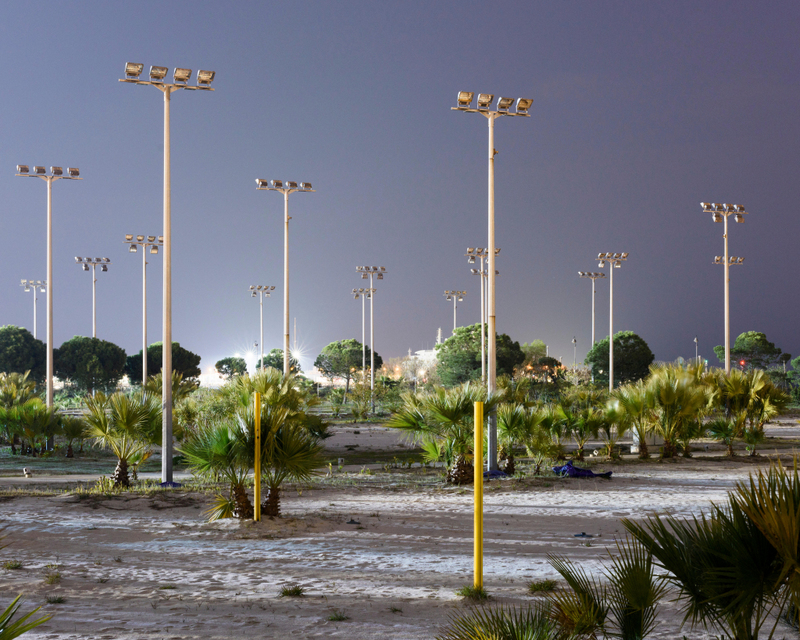
To make matters worse, it was just after the games that the economy crumbled – thus, the venues built for the games were shortly made defunct and abandoned. Not to mention crumbling like the ruins which Greece is so famous for! Now the Faliro Volleyball Centre is considered one of the lucky buildings: there are “plans” to re-purpose it. However, that day is still a long way off, as the economy, even in 2019, still struggles with its debts owed and trouble with the EU. It’s the thought that counts right?
Olympiapark Schwimmstadion Berlin (Berlin, Germany)
Now Schwimmstadion in Berlin may still be functioning (well, as of a couple of years ago it was still running), but we want to cast you back to the politically significant 1936 Berlin Olympics. The first games to be televised, they were considered to be one of the most self-indulgent – remember, at the time Hitler was in power. His fascination with the Ancient Greeks and their legacy made it all the more important and significant to Hitler, thus the excessive display. You know, showing the world that Germany and his “Third Reich” were on the way.

Behind the carefully designed venues and ornate displays, there was the deep-rooted evil in Hitler’s Nazi Germany, just waiting to come out in its full form. To think that just a few years later World War II would be upon the world is a crazy thought. But considering the racism and anti-Semitism which was almost flaunted at the games, it’s surprising that precautionary actions weren’t taken earlier. But hey, that’s history. The most iconic and uncomfortable moment in the games was at the point when African-American athlete Jesse Owens took home four gold medals, and you can guess who was at the medal-giving ceremony. Mmhm. Germany ended up winning the medal count, with the U.S. a close second. The Olympics were postponed due to obvious events, with them next being held in 1948, after World War II had ended.
Hellinikon Softball Stadium (Athens, Greece)
And we’re back to where it all began. Yep, Greece. So the 2004 Olympics really, occurred just in the nick of time – as in, shortly before the catastrophic economic collapse. The games came and went relatively smoothly – tourists streamed into the country, providing a nice revenue boost. Feta cheese and pita bread were consumed, and a number of milky freddo cappuccinos too! The crystal waters swam in and overall, people had a great time. But that is a distant memory now, with the only reminders left being in the form of abandoned Olympic venues.
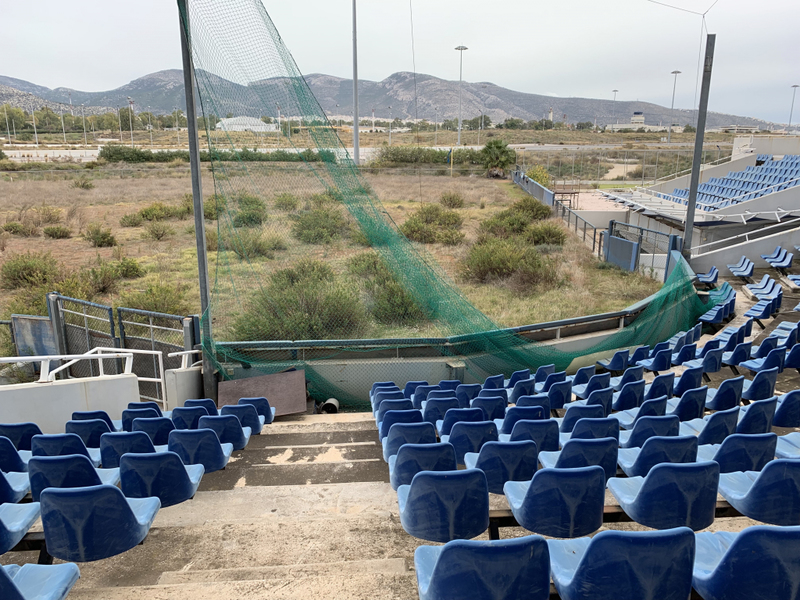
Hellinikon Softball Stadium, which gets another red stamp on Google as “permanently closed”, the stadium was located in the Athens Olympic Complex. It seems that the 4800-seat venue is now a shell, with weeds and shrubbery having grown over the pitch which once hosted softball legends. Despite the fact that the Greeks don’t really play softball, it seems that the stadium is still standing. If anything, the reason it hasn’t been demolished yet is owing to two things: the fact that no one cares, and the fact that no one has the money to demolish it! Maybe it’ll still be there by the time the next Olympics are held!
Old Wembley Stadium (London, England)
Pele, the world’s greatest soccer player, once said that “Wembley is the cathedral of football. It is the capital of football and it is the heart of football.” Now that is high praise. The site of the 1923 stadium, which occupies the new Wembley Stadium, was demolished back in 2003 – to the great disappointment of millions of football fans. When its famous Twin Towers were demolished, people were rife!
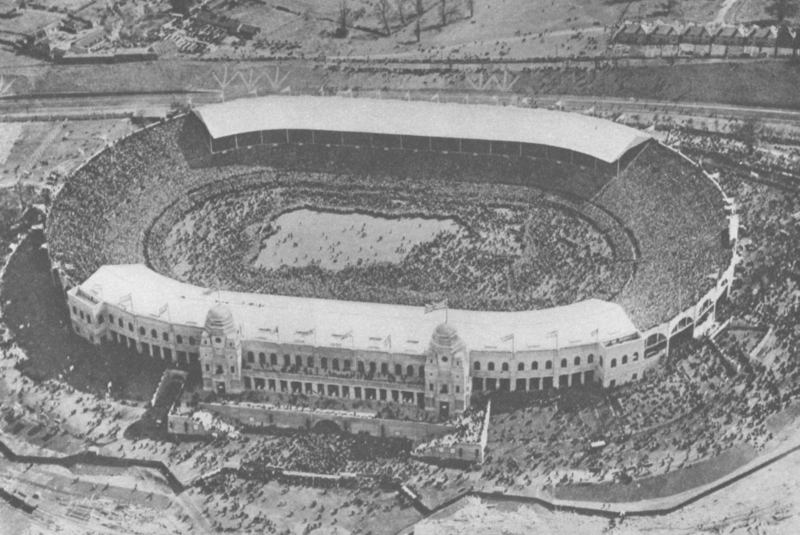
Recognized as the world’s best-known football stadium, the old Wembley hosted the 1948 Summer Olympics, rugby league’s Challenge Cup final and the 1992 and 1995 Rugby League World Cup Finals. Did you know it also hosted the 1985 Live Aid charity concert, where Queen famously turned the volume way UP (if you’ve seen the biopic, titled Bohemian Rhapsody, you’ll have been able to relive that iconic moment!)? Pretty cool! Between 1923 and 2000, Wembley was home ground for the English National Team. But the stadium was outdated and needed a makeover – so the team sought a new stadium. The old stadium sat vacant for two years before finally being taken down in 2002. RIP Wembley, you served Queen and Country well (literally).
Fisht Olympic Stadium— (Fisht, Russia)
Initially, the Olympic Venues which hosted the 2014 Sochi Olympics in Russia were meant to be repurposed. You’d think that with a total cost of $51 BILLION (yes, billion, you read correct!), that sort of money wouldn’t just go down the drain for one event. Sure, the event put Russia back on the map, and was the most costly Winter Games in history. But in Mother Russia, it seems that there were more pressing issues which dwarfed even the size and cost of these huge structures.

The city faced imminent social unrest after the games came and went, which put the repurposing plan on the backburner. Dubbed the “Museum of Corruption”, Russia hasn’t recovered the costs of Sochi, whilst the holding companies of the venues tiptoe bankruptcy. You can see from the aerial shot of one of the stadiums below, that these venues were absolutely massive! Sadly, since the Winter Games, these stadiums and venues have remained vacant, with no hope for the future. We’ll just have to see if Sochi joins Athens in abandoning its stadiums.
Georgia Dome (Atlanta, Georgia, USA)
Since 1992, the Georgia Dome was the Home of the Atlanta Falcons and is the world’s largest cable-supported stadium. Well, was, until it was closed in 2017. But before we get to that, let’s look at its history. Georgia Dome was built in 1992 at a cost of $214 million and went on to successfully host the 1996 Summer Olympics.
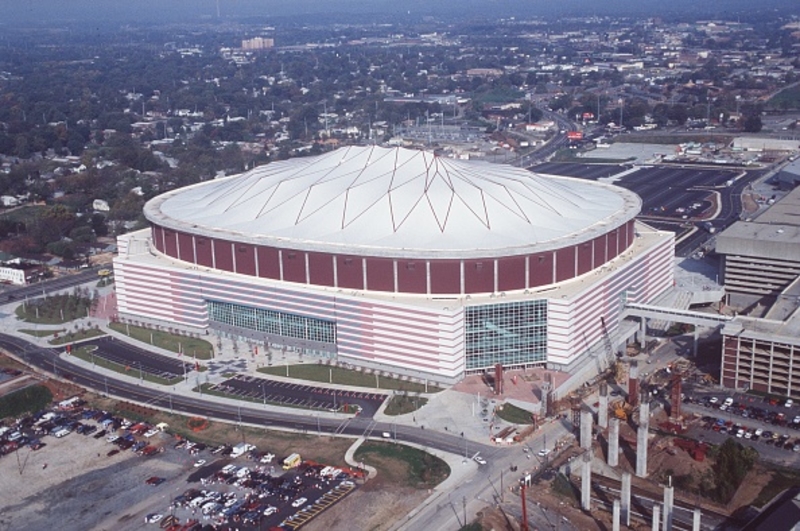
But just twenty years after hosting the all-important games, the Dome was reduced to rubble. An earthquake? Terrorism? Arson? Bite your tongue! It was in fact, a planned implosion, which took a hefty 5,000 pounds of explosives to execute! Unlike its ill-fated brother and sister stadiums, Georgia Dome, after its demolition, found a successor: Mercedes-Benz Stadium which it is now known by has since taken its place, and is the new home to the Atlanta Falcons and Atlanta United.
Dongdaemun Stadium (Seoul, South Korea)
What once hosted the 1988 Seoul Olympics in South Korea, has since been demolished. But we’re flying the flame (not the Olympic Torch!), and reminding everyone that it did exist and was important. (So wholesome, we know). The former sports complex and multi-purpose stadium was located near the Great East Gate. Adjacent to the stadium was the Dongdaemun market, which sold mostly athletic goods. But just 20 years later, it was demolished, making way for the Dongdaemun Design Plaza and Park.
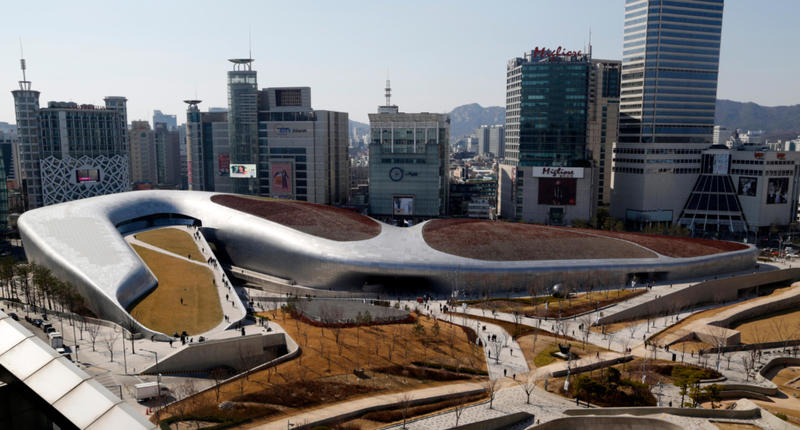
The 1988 Olympics however, held much significance – they were in fact, the last games for the Soviet Union and East Germany (you’ll remember that a year later, the Berlin Wall came down!). Due to it being their last year competing, the Soviets dominated – trying to prove a point? Probs.Since the 1988 Games, South Korea didn’t waste any time (we can’t say any really were abandoned as such), and realized that if Olympic venues weren’t used efficiently, they would be repurposed. However, Dongdaemun stands out, as since being opened in 1925, it lasted a lot longer in its unused state, before finally being destroyed in 2008.
Estadi de Sarrià (Barcelona, Spain)
Standing its ground between 1923 and 1997, next on our list is Estadi de Sarrià, a football stadium in Barcelona, Spain. The stadium, which lay on the road which connected the Sarrià district to Barcelona, was constructed for 170,000 pesetas. The home of Barcelona’s little-known team (well, to the world anyway), RCD Espanyol, it was the second team which Barcelona had entered in La Liga! The glitzy F.C. Barcelona, which grew to great fame over its star Lionel Messi, was one-half of Barcelona’s footballing pursuits.
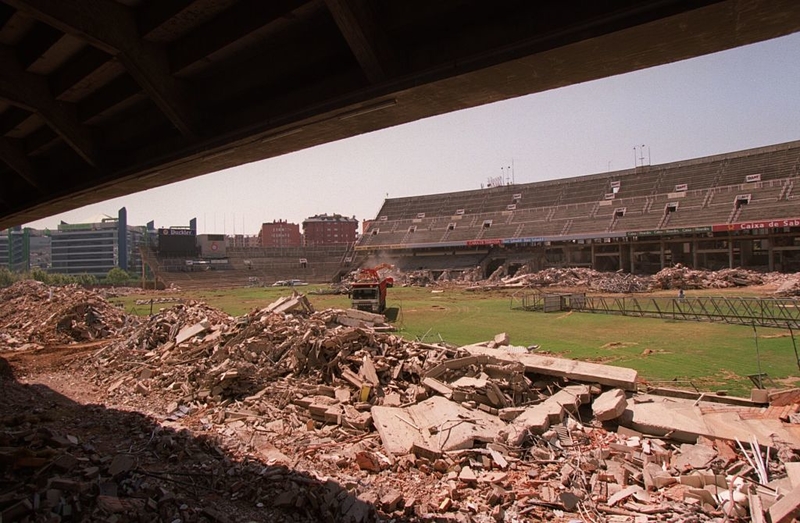
The other team was RCD Espanyol, the slightly neglected younger brother. Diehards would disagree, but it seems that really, anyone outside of Spain would be scratching their heads. Hey, you just learned something new today! Since 1997, whence it was demolished, RCD moved around before settling in at RCDE Stadium in 2009. Fun fact: the stadium hosted the 1982 FIFA World Cup, as well as five football matches during the 1992 Summer Olympics!
Astrodome (Houston, Texas)
You know how the saying goes, everything’s bigger in Texas! And apparently, better, as we introduce you to what was the world’s FIRST multi-purpose, domed stadium. Opening in 1965, it was the home of the Houston Astros of Major League Baseball, hence the title you may know it by, the Astrodome. Like we said, “everything’s bigger” – so this earned it the moniker “eighth wonder of the world” – yeah this was years before the Burj Khalifa was built! Fun fact: after the original natural grass inside the venue died, the Astrodome became the first large-scale sports venue to install artificial turf, which later became known as “Astro Turf”! An animated scoreboard, which was a technological first, named the “Astrolite” was also housed inside the famous dome. Despite some renovations in the 80s, the 90s saw the Astrodome become obsolete. The Oilers of the NFL, who knew the dome as their home between 1968 and 1996, were moved to Tennessee, changing their name to the Tennessee Titans.
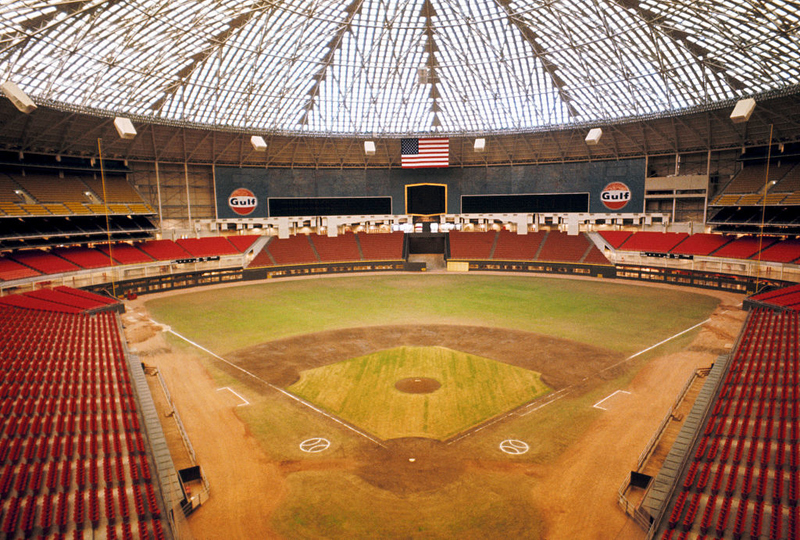
Shunyi Olympic Rowing-Canoeing Park (Beijing, China)
Okay, this image is pretty disconcerting. What you see is the remains of the Shunyi Olympic Rowing-Canoeing Park, which was built especially for the Beijing 2008 Olympics. Looking at the murky liquid (yeah, we are definitely not calling that water), it seems that water quality is something the Chinese need to look into, stat. Beijing is known for its smog and poor air quality, but we think that may need to be reconsidered looking at the state of this “canoeing” park.
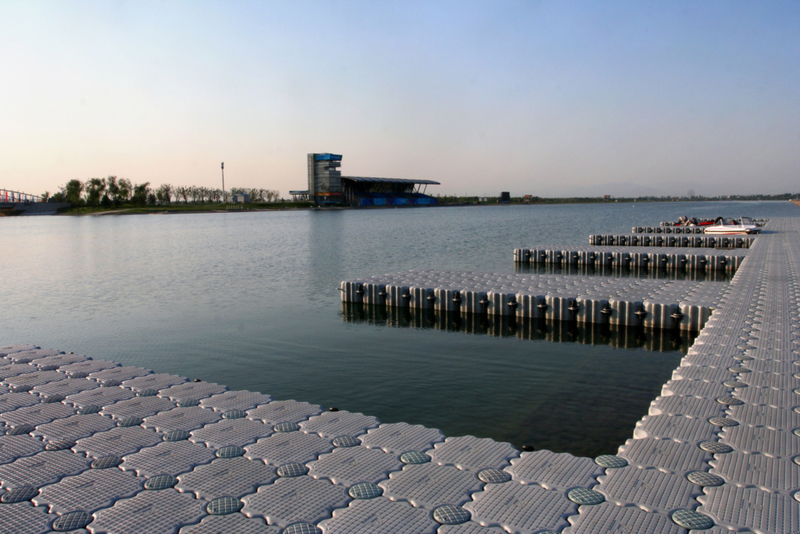
The second most expensive Olympics of all time, the Beijing Olympics was considered a great success, particularly considering the quality and size of the venues and facilities which were constructed leading up to the games. Again, however, it seems there’s a recurring theme: we want to call it the “Olympic curse” – countries invest millions and millions, hoping it will pay itself off, only to turn into a waste of time, money and effort. In the long run, that is! Stadiums and arenas which were once the pride of Beijing, have become empty monoliths. We’re talking like, dystopic Blade Runner ziggurat empty. Pretty damn empty.
Civic Arena Pittsburgh (Pittsburgh, USA)
Well, when you see on Google that the venue is listed with a big red banner “permanently closed”, you know that something went wrong at the Civic Arena in Pittsburgh. Formerly known as Mellon Arena, it was the home of the Pittsburgh Penguins (the city’s National Hockey League team) from 1967- 2010. Built for $22 million back in 1961, the Civic Auditorium (as it was once known) had a very unique shape and structure – so much so that it was given the nickname “The Igloo”, with its retractable roof and use of over 3,000 tons of Pittsburgh steel.

Now that’s an advertisement for the steel company! With its classic dome shape, it wasn’t without its problems – the engineering clearly wasn’t spot on, as the cost and repairs to hydraulic jacks didn’t quite justify it being opened fully every time. After 1995, retractions were halted, with the roof permanent closed after 2001. The historic hockey venue saw its end in 2012 after various groups declined to give the venue historic status. In its place? Well, existing parking lots were expanded over the site. Pretty sad tbh. But it seems that the Penguins still have the rights to redevelop the property – but since 2014 we haven’t heard anything!
Amphitheatre of Pompeii (Pompeii, Italy)
Okay, history nerds, it’s your time to shine! (Okay we’re taking back the fact we called you nerds… we kinda need your help for some fact-checking here). The oldest surviving Roman amphitheater, this “stadium” was long abandoned because well, Vesuvius. Yep, the massive volcano erupted in 79 AD, and along with covering the amphitheater, buried Pompeii and Herculaneum with it!
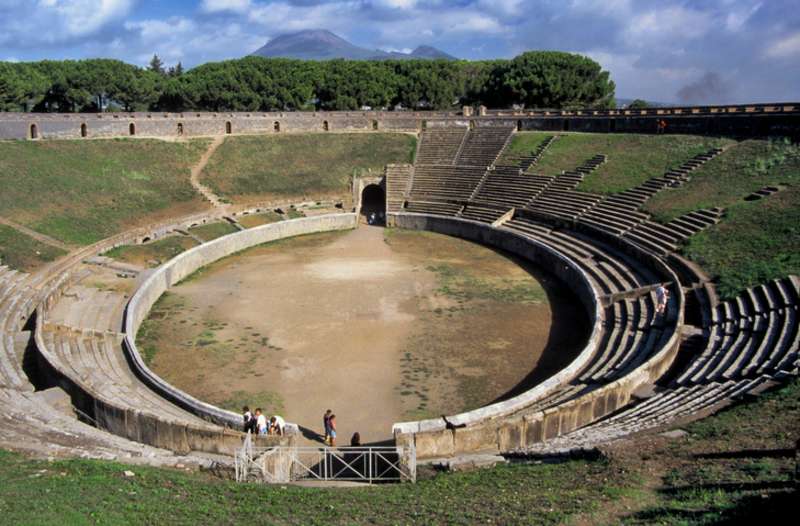
It famously held gladiatorial events and games, but after one particularly deadly brawl between Pompeiians and Nucerians, there was a 10-year ban on the events! These days, it is now a historical landmark and object which archaeologists fawn over. Fun fact: Pink Floyd made a concert film at the amphitheater, which was the first public performance held there since 79 A.D.! Shine on, you crazy diamond!
Shea Stadium (Queens, New York, USA)
The great Shea Stadium has seen some great moments. One such moment was in August 1965, when 55,000 screaming fans were clambering over one another awaiting the Beatles’ concert at Shea. It was also home to the New York Mets, for a staggering 45 seasons! When it was built in the 60s, it was the first brand new stadium to be opened in New York City since 1923. Named after attorney William A. Shea, he is forever remembered as the man who made sure Major League Baseball would return to New York City.
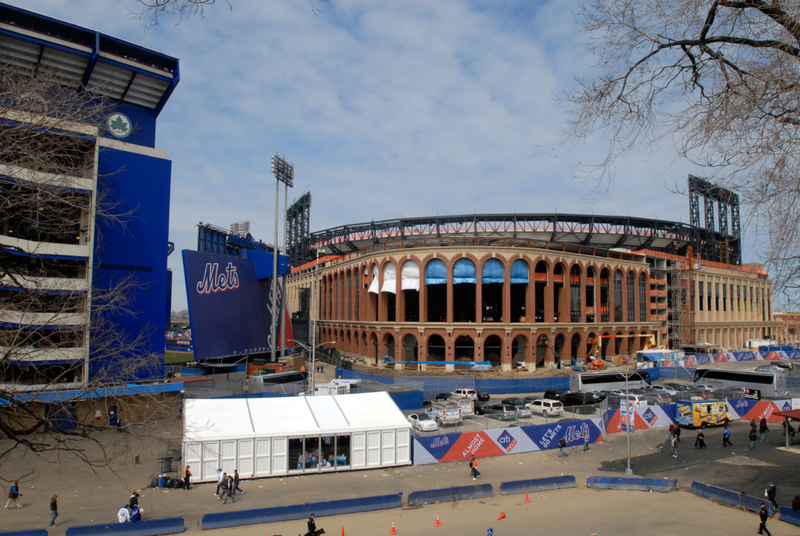
The stadium, which hosted both baseball and football games, was opened in 1964. In a symbolic ceremony, Shea in fact opened the players “baptizing” the Mets players with bottles of water on the field! Shea Stadium wasn’t just any regular stadium, with 21 escalators, four restaurants, 54 restrooms and a massive scoreboard! Its circular shape allowed room for two rotating stands, which fit 10,000 people. Many years later, the Mets, or the “Miracle Mets” as they were known at one stage, played their last game in the old stadium. Over the course of 2009, Shea Stadium was deconstructed, and the Mets moved to the $850 million Citi Field stadium.
Boothferry Park (Hull, England)
Alright, we’re not going to beat around the bush with this one – Boothferry Park wasn’t exactly state of the art. It wasn’t a state of the anything, apart from well, a state. Formerly the home ground of Hull City A.F.C (between 1946 and 2002 to be exact), Boothferry was more about character than looks. It’s about personality folks!
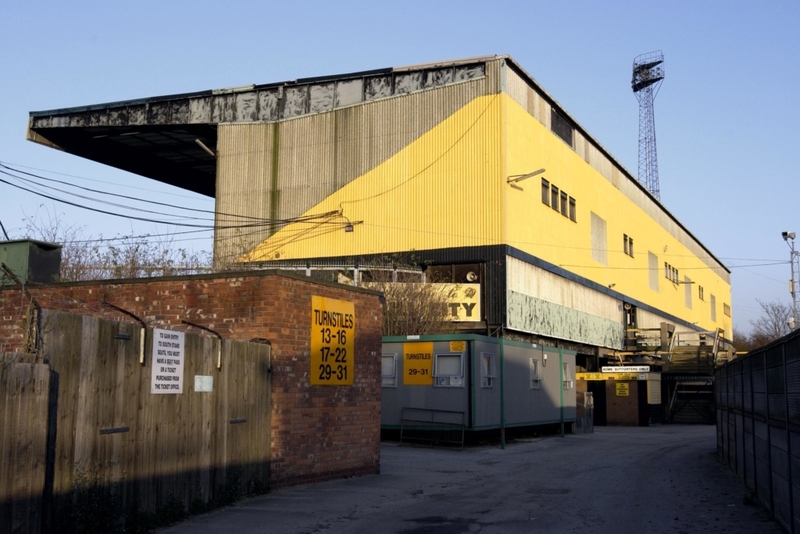
Holding an intimate crowd of 16,000, it was, in fact, something of a landmark for Hull, particularly the light towers which reached up into the sky. From the colorless stadium to the light grey, gloomy skies which England is so well known for (don’t scoff Brits, you know it!), you could say they were going for a minimalist look. After Hull City’s departure to the Kingston Communications Stadium in 2002, well, it seems that Boothferry Park was left behind. As a football stadium, the venue closed in 2002, before being taken over by a supermarket. But even the supermarket tenants couldn’t keep people coming back. So, in 2011, Boothferry Park’s demolition was complete.
Green Point Stadium (Cape Town, South Africa)
Cape Town is arguably one of the most beautiful cities in the world and has hosted large-scale international events. Just like the FIFA World Cup back in 2010! Built for the World Cup, it also became the home of Premier Soccer League clubs Ajax Cape Town and Cape Town City. But that stadium is known as the Cape Town Stadium. We’re going back a little further, to when it was known as Green Point Stadium. The 18,000-seater stadium replaced part of the Metropolitan Golf Club.
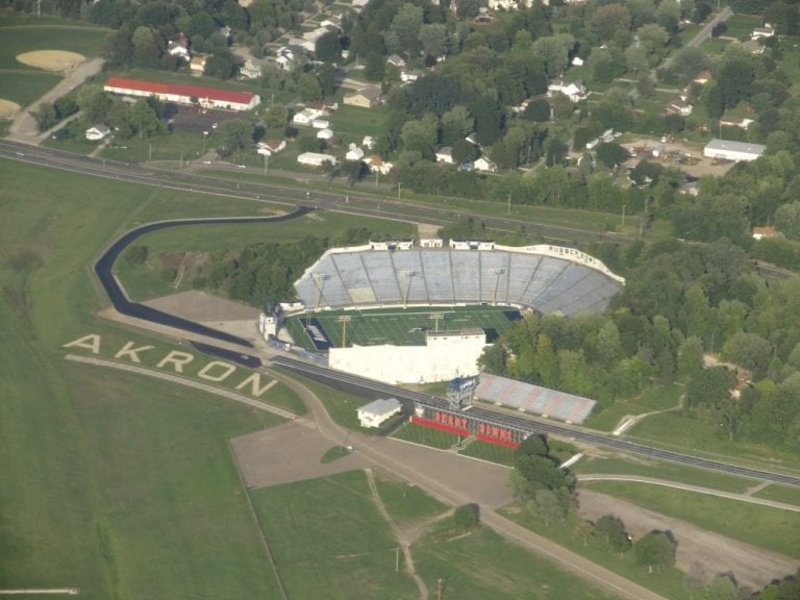
The multi-purpose stadium was used for soccer, (football for you fans!) as well as concerts. And big concerts at that, with stars such as: Michael Jackson, Whitney Houston, Def Leppard, U2, and many more gracing the stage! Just before the World Cup, the stadium was demolished to make room for the stadium which sits there proudly today: the Cape Town Stadium. Out with the old and in with the new!
Pontiac Silverdome (Pontiac, Michigan, USA)
Situated on a massive 127 acres, the Pontiac Silverdome was a shining beacon for sports and entertainment when it opened in 1975. When it was built, its fiberglass fabric roof was held up by air pressure – the first use of this particular architectural technique in a major stadium! Seating 82,000 + fans, it was the largest stadium in the NFL (and it held this title for over 20 years until thee FedExField opened in D.C. in 1997! Famously known as the home of the NFL’s Detroit Lions, it also housed the Detroit Pistons. As well as hosting numerous sporting events, the Silverdome was a regular concert venue, hosting Elvis Presley, Elton John, Led Zeppelin, KISS, The Rolling Stones, The Jacksons, Bruce Springsteen, and the E Street band, U2, Madonna and Metallica among many others.
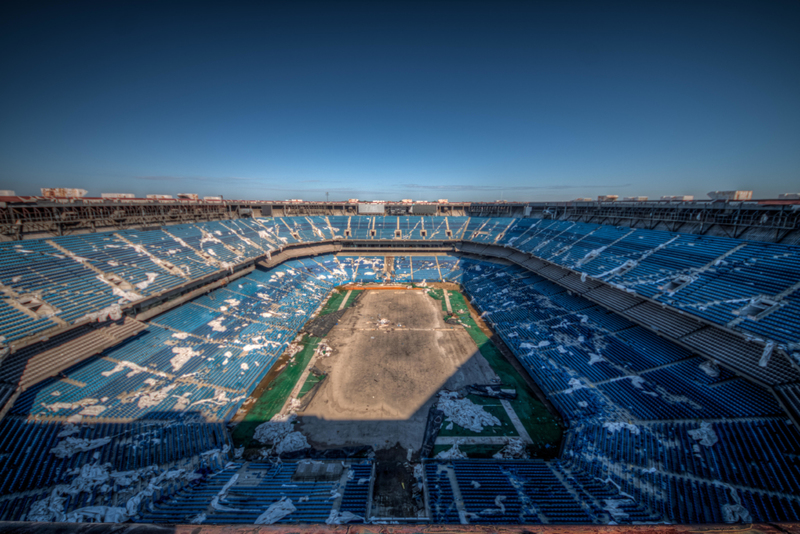
Nansen Ski Jump (Milan, New Hampshire, USA)
Nicknamed “The Sleeping Giant” (among other names!), the Nansen Ski Jump was the pride and joy of Milan in New Hampshire. No no, not Milan in Italy, the fashion capital of the wold! Milan, which is a town of around 1,000 residents located in the US is really, a speck on the map! At the time when it was constructed (and we’re going back to 1936), Milan was the talk of the town (not to mention entire region), and was the largest ski jump in the eastern United States.
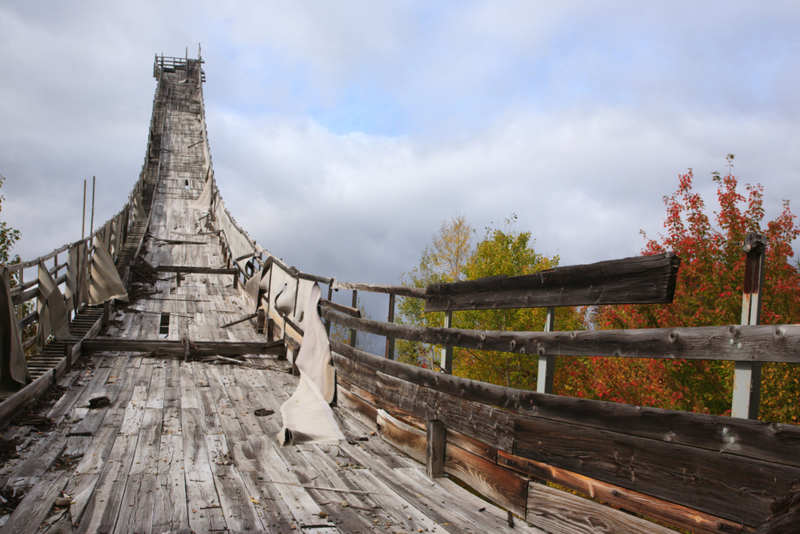
It attracted all East Coast Olympians who would train at Nansen. But as quickly as it was elevated to high status, it quickly came down a er… slippery slope and straight into disregard. By 1988, the jump was out of use and left as a gigantic concrete structure. More recently, there have been some efforts to restore the jump to its former glory, but it seems that it’s going to remain idle for a while – that is until the state gets funding to make Nansen great again!
Stone Mountain Tennis Center (Atlanta, USA)
Ba-bum. Another one to Google’s red “permanently closed” stamp. RIP Stone Mountain Tennis Center. Now a “big empty field” as described by the Atlanta Journal-Constitution, the Stone Mountain Tennis Center was where Gwinnett County hosted events during Atlanta’s 1996 Olympics. Built specifically for the Olympics, the tennis center had both the capacity and quality construction fit for any venue – it was designed to stand the test of time.
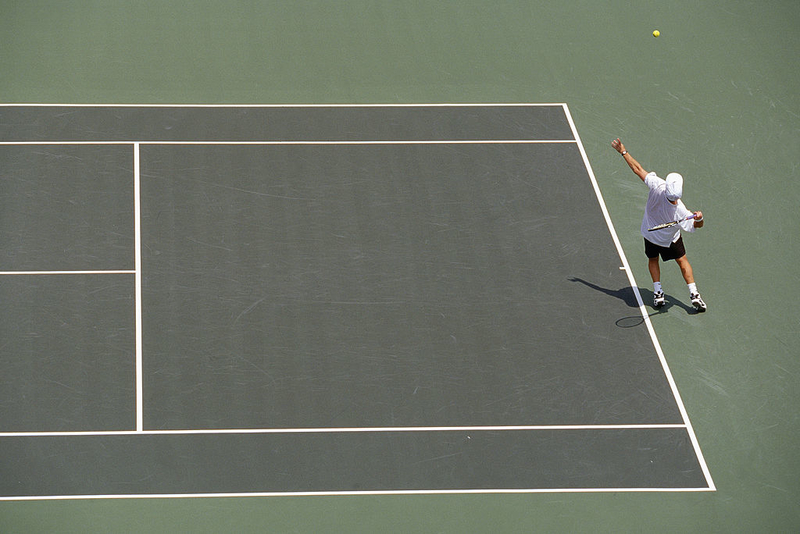
The problem? It was built smack bang in the middle of football heartland. At a cost of $22 million, the state-of-the-art facility, which made its debut in 1996, languished in disrepair in the years after the Games. Pretty sad eh? After 11 years, the county obtained the property and cleared it for demolition in 2007. Apparently it’s going to developers to dream up some big project – so guess we’ll have to just wait and see what happens!
Baltimore Memorial Stadium
Imagine this: it’s Summer 1970. You’re in Baltimore and an Orioles fan. You’re sitting with your hotdog at Memorial Stadium. Now that’s a pretty picture, isn’t it? The only thing wrong with this picture is that well, that’s a distant memory, seeing as the Baltimore Memorial Stadium has been gone a long time, being demolished in 2001. The home of the Baltimore Colts between 1953 and 1983, it was decided that the stadium was better for watching baseball… football not so much! During football season, the field was laid out in such a way that quality seats were missing and the “horseshoe” shape didn’t lend itself to the game.
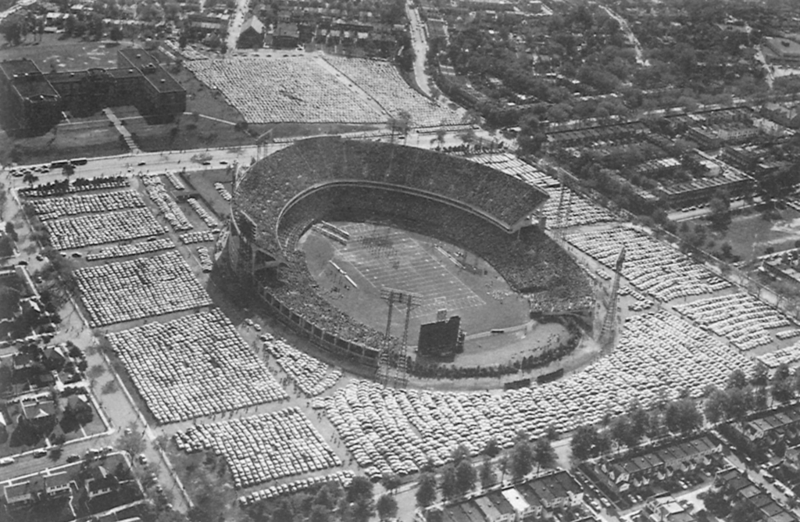
It continued to host the Orioles until 1991, at which time they moved to Camden Yards. The Baltimore Ravens moved in but shortly moved their business to Camden Yards also. Memorial Stadium sadly was left vacant until 2001. It has since been replaced by the Cal Ripken Senior Youth Development Field, with numerous apartment blocks surrounding the field. C’est la vie, eh?
Maracanã Stadium— (Rio de Janeiro, Brazil)
So this one sort of half qualifies as ‘abandoned’ – but we’re actually happy that this stadium is being used! Just last month, the Copa América was held at the venue! The stadium was initially opened in 1950, named after a river in Rio de Janeiro, to host the FIFA World Cup. In the deciding match, Brazil lost out to long-time rivals Uruguay in a 2-1 clash! Over the years the stadium saw many football matches, and in 2016 it was chosen as the venue to host the 2016 Rio de Janeiro Summer Olympics.
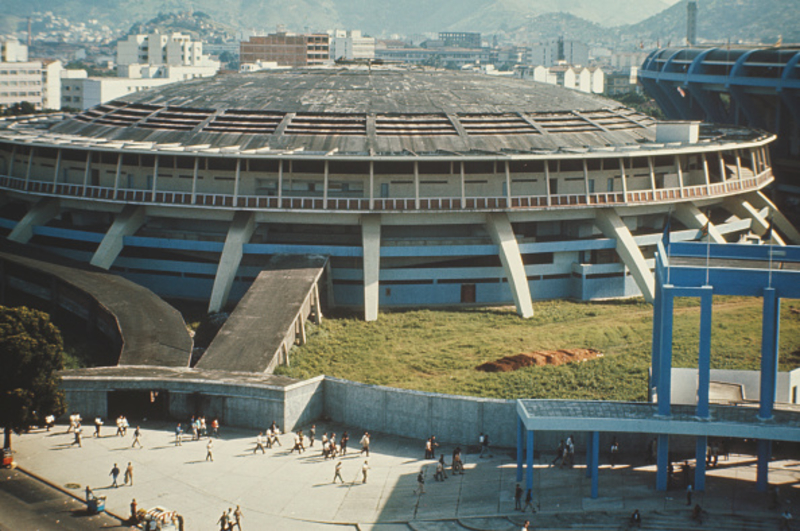
Within the fabled stadium, both the opening and closing ceremonies were held, but just a short 6 months after the games were over, the power was turned off because well, no one was paying the massive energy bill! Sadly, other venues near the complex were later looted, including a golf course and tennis court, because after the 2016 Olympics, there just weren’t any matches or new operators willing to take over the venues. Up until just recently, the stadium was long forgotten, but we hope this boost has given it a new lease, and hopefully we’ll see more events hosted there in future!
Stand Athletic F.C. (Whitefield, England)
So this place is so far gone that it’s listed on a website literally titled “derelictplaces.co.uk” if that doesn’t say something to you then you’re clearly not using your brain! Now Stand Athletic F.C. was a football club based in Whitefield, Greater Manchester. In 1993 they joined the Manchester League – but despite winning the Division Two title, were not accepted for promotion to the higher league.
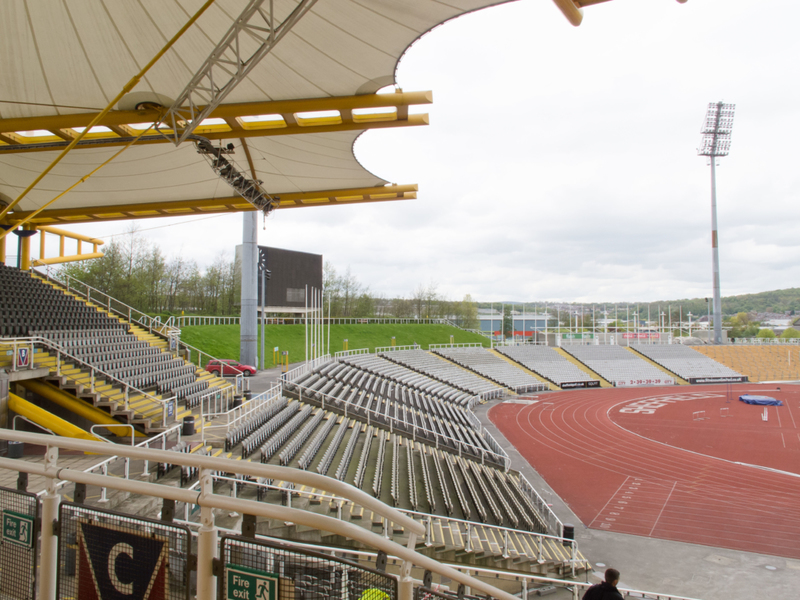
Now derelict, the club’s overgrown field and well, there’s no other word but dilapidated supporters’ stand – both a reflection of how things went down the drain for Stand F.C. Despite its name, it seems there’s no “standing room” for the club and its supporters. (We’re deep in Dad joke territory with that one, we know).
Igman Olympic Jumps, (Sarajevo, Bosnia)
Time really does make a meal out of everything, doesn’t it? Particularly so for the Igman Olympic Jumps, situated in (what was) Sarajevo, Bosnia. What was once the Olympic luge and bobsled track from the 1984 Winter Olympics, has now become well, pretty derelict. You know, the type of place you see seedy teens skulking about dealing substances or Netflix passwords. You know, that kinda stuff! Graffiti-covered and forlorn these days, the ski jumps were once nigh-glistening walls and slabs of concrete, covered with a thin layer of ice. Sarajevo, the now dissolved capital of “Yugoslavia” hosted the Winter Games back in the 60s, but with not much pomp or excitement if we’re honest. It seems that the news item that’s come from those games is the fact the ski jumps were never used again and have become a bit of an eyesore really.
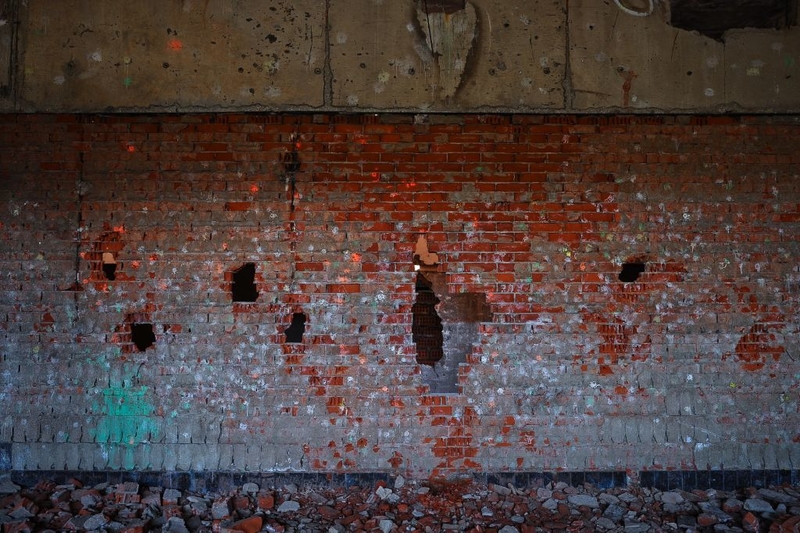
Following the Bosnian war, which took no prisoners, the abandoned relics which once stood so proudly have now become overrun with weeds and colored with the tags of local graffiti ‘artists.’ (That was sarcasm btw, just checking you’re still keeping up!) Not to mention bullet holes which are scattered over the place due to the conflict which swallowed up the entire region. As you can see, the Igman Jumps seriously lost their way, due to lack of funding and lack of ownership, and the sad fact is that these are one of many venues in the region.
Kingdome (Seattle, Washington, USA)
RIP Kingdome. 1976-2000. You will be forever remembered and never forgotten for your contribution to gentle seating thousands and thousands of American backsides. What could be mistaken for some sort of avant-garde scientific facility is, in fact, the exterior of Seattle’s famous Kingdome. The home of both the Seahawks and the Mariners throughout the 70s, 80s, and 90s, this loveable dome was a fan favorite for football, baseball, and basketball! Did you know: The Mariners played their final game in the Kingdome on June 27, 1999 before quickly moving across and playing their first game at their new home ground, Safeco Field just three weeks later. THEY DIDN’T EVEN GIVE ANY TIME TO GRIEVE! Rude. Okay, it’s a stadium, but still. It was their home! Ok, we’re just going to go now.
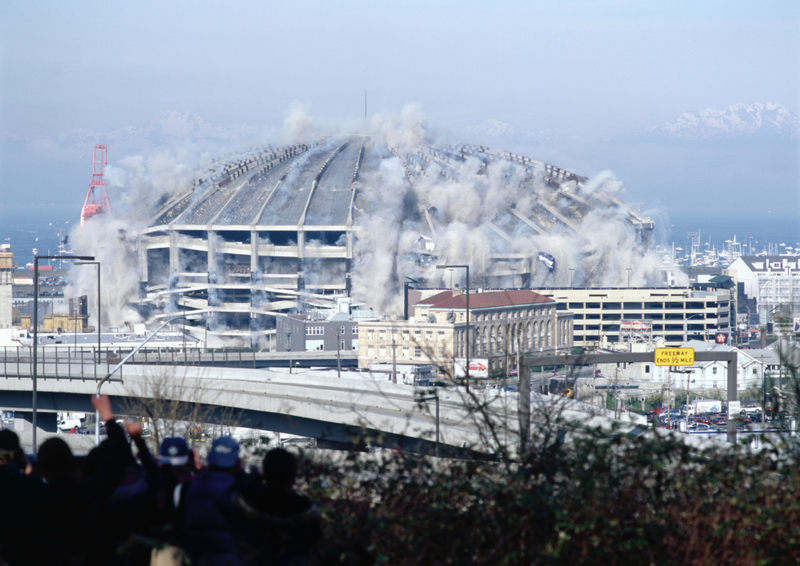
Perhaps their indifference was owing to the fact that during one of the Mariners’ pre-game warmups, a portion of the ceiling collapsed which narrowly missed people! Talk about the ol’ girl wearing out! But this incident, along with others egged on the city to fund a new stadium. March 26, 2000, was the last time anyone entered the Kingdome, as it was demolished by planned implosion.
Orange Bowl (Miami, Florida, USA)
The Miami Orange Bowl was (until a decade ago), an outdoor athletic stadium located in Miami, Florida. Something of a Miami landmark, the stadium was home to the Miami Hurricanes college football team, as well as the pro-Miami Dolphins, for 21 seasons. They moved to the Hard Rock Stadium after a blessed 20 years at the Orange Bowl. When it was first opened in 1937, Orange Bowl went by another name: Burdine Stadium. In 1969, it was renamed in honor of the college football bowl game which was played annually between 1938 and 1996.
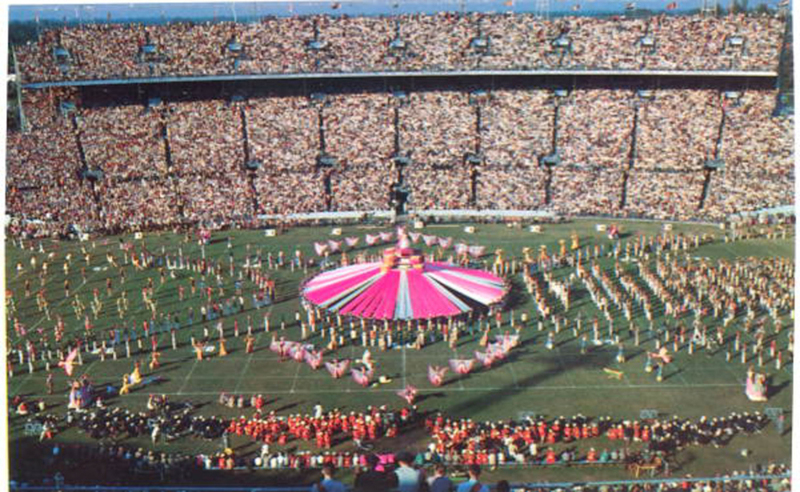
The ever-important football match was basically the holy grail for the Hurricanes, who at one time were the champions, as well as having access to the most prestigious program for football recruits. Sadly the importance of the Orange Bowl matches decreased, and they dwindled into inexistence. In 2008, The Orange Bowl was demolished, and the site is now known as Marlins park, the home of the Miami Marlins, which was opened in 2012!
Old Yankee Stadium (New York City, USA)
It’s no wonder that the famous Yankee ballpark, which saw Babe Ruth knock a few out of the stadium, was nicknamed “The House That Ruth Built.” Also noted among fans as “The Cathedral of Baseball”, Old Yankee Stadium was built over the course of 1922 and 1923, paid for by Yankees owner Jacob Ruppert. A guy who could just give $2.4 million to building his stadium clearly wasn’t short of a buck! “The Stadium” saw the Yankees take home 26 World Series titles, making it one of the most famous venues in sporting history – did you know it hosted The Greatest Game Ever Played? Yep, it hosted the 1958 NFL Championship Game.
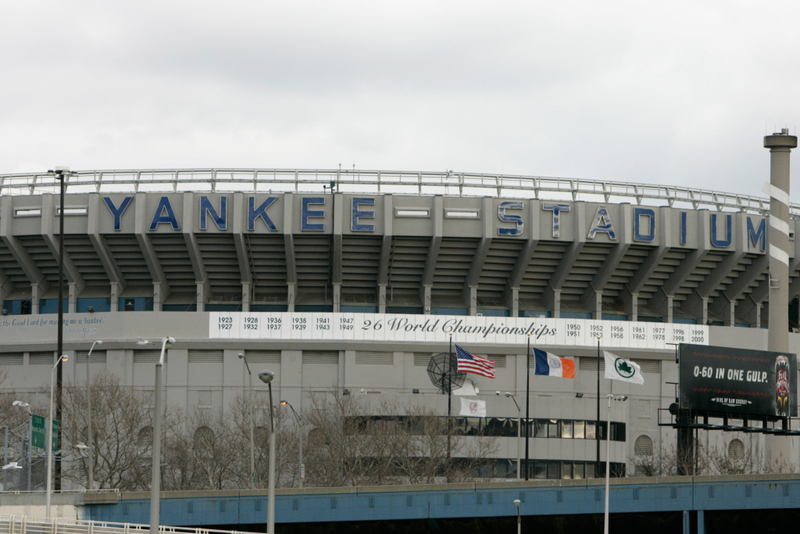
Pretty big deal. If you don’t know about it, please, Google it. Over time however, the stadium was in need of repairs, to a point where it was in fact closed in 1974. A fan favourite, the City of New York, which owns the stadium, decided by the mid 2000s that it was unsuitable for the future, and decided funds were best spent on a new stadium in the Bronx. The new $2.3 billion stadium was opened in 2008, and adopted the old “Yankee Stadium” name! The original stadium, or “Old Yankee Stadium” was demolished in 2010, with the land being converted into a park later on, known as Heritage Field.
Stadion Dziesieciolecia (Poland)
So for those of you who don’t understand Polish, “Stadion Dziesieciolecia” translates to “10th-Anniversary Stadium.” Now, this stadium was borne of competition, after the Association of Polish Architects held a contest for the project of “an Olympic Stadium for the city of Warsaw”. The winning architects saw their design realized just two years later. For decades it was, in fact, the largest stadium in Poland. But despite its 71,000 person capacity and frequent use for festivals and football matches (as well as being the home to the Polish National Soccer Team), by the 80s, the stadium fell into disrepair.
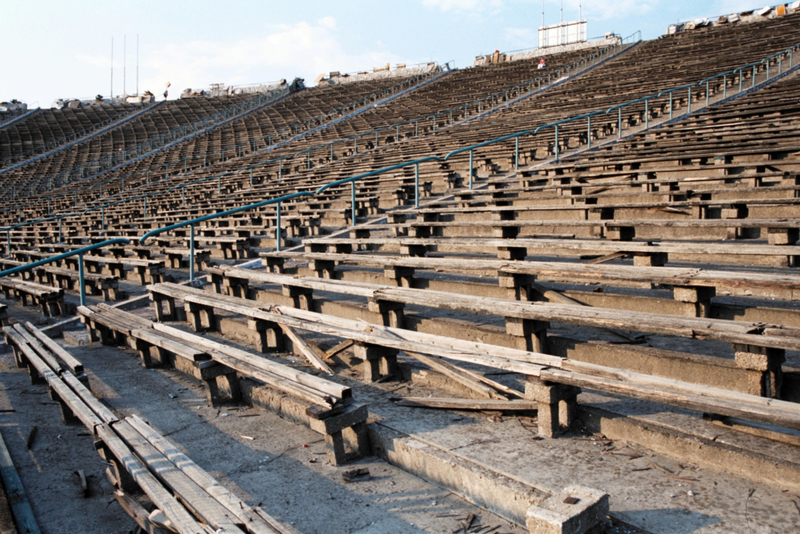
It was left vacant due to a lack of funds to refurbish the stadium. After 1989, which was a turning point, the stadium was used as a bazaar, known as “Jarmark Europa”, which sold a whole range of goods, from clothes to software. But it was clear that this use was hardly distinguished particularly given the stadium’s history! In 2008, the famed stadium was demolished in 2008, making way for the National Stadium, which was a venue for the Euro 2012 football competition.
Miami Marine Stadium
A National Treasure of the National Trust, South Florida’s Miami Marine Stadium is truly one-of-a-kind. A young Hilario Candela made his debut as an architect in 1963 with the stadium, and it is today considered a marvel of modern construction! It’s been named “the city’s Eiffel Tower.” Indeed, being listed on the National Register of Historic Places definitely turned things around for the stadium, helping it to avoid the same fate as many of the stadiums on this list.
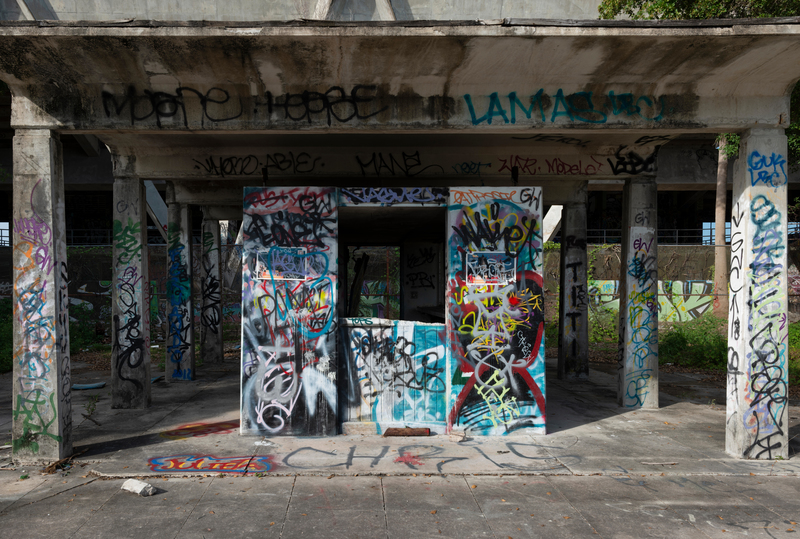
The Miami Marine Stadium has also had some high-profile guests, hosting acclaimed speakers and musicians such as Elvis Presley and Sammy Davis Jr.! Whilst it had been hosting events, it was starting to fall apart by the mid-2000s. But with petitioning and campaigning by preservationists, in November 2016 the Miami City Commission approved $45 million dedicated to the restoration of the stadium. Looks like the Miami Marine Stadium will see new life with the project – and the original architect, Hilario Candela, is one of the leads on the architecture team! Now that’s a reunion
Chicago Stadium (Chicago, Illinois, USA)
Between 1929 and 1994, “The Madhouse on Madison”, as it was colloquially known by Chicago natives, was one of the most famous indoor arenas in Illinois. The home of the National Hockey League’s Chicago Blackhawks and the National Basketball Association’s Chicago Bulls, the stadium had a capacity of roughly 18,000. If you’re wondering why the “Madhouse” nickname, well, there’s a very good reason for that – it was in fact due to the rowdy crowds which would pack into the arena every evening. “The Loudest Arena in the NBA”, in 1971 during the Stanley Cup semi-finals, announcer Dan Kelly reported “I can feel our booth shaking! That’s the kind of place Chicago Stadium is right now!” Yah, that loud.
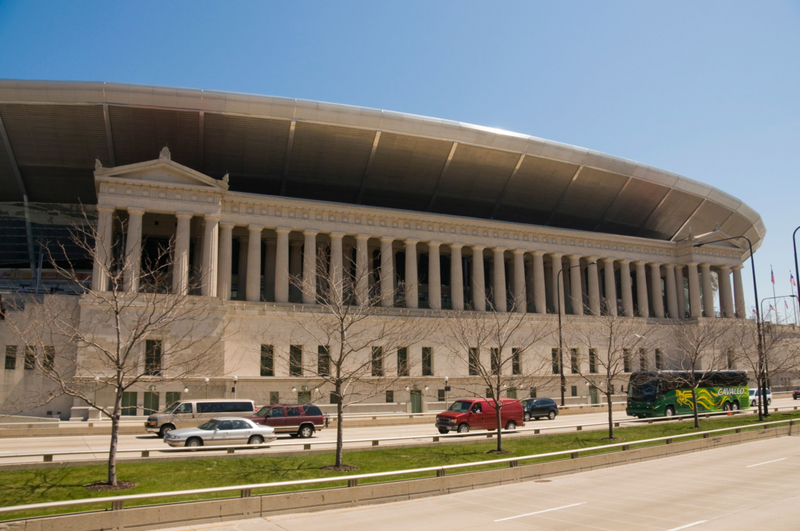
But sadly, the raucous barn-shaped arena ultimately would be demolished. After the Blackhawks and Bulls moved to the United Center, the stadium had to go, and made way for… a parking lot. At the time, the demolition attracted media attention – CNN even televised its demolition, showing devoted fans crying as the wrecking ball took down their beloved stadium. Ah well, out with the old and in with the new!
Giants Stadium (New York, USA)
Between 1976 and 2010, the Giants Stadium, also known as “The Swamp”, hosted a plethora of sporting events and concerts. The home of the New York Giants and the New York Jets, it held a whopping 80,000+ spectators! 756 feet long and 592 feet wide, it reached up as high as 178 feet! For the Giants, the stadium proved to be a lucky charm of sorts – for the New York Jets, however, it was a different story. It was also home to the New York Cosmos, a professional soccer team, which saw its peak attendance reached in the 70s.
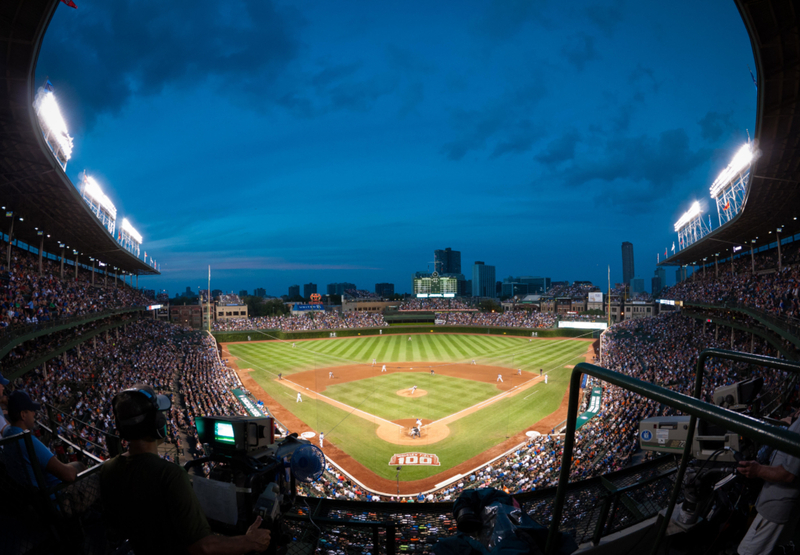
But as of 2009, the Giants Stadium was closed. Why? Well, because the bigger and better MetLife stadium was constructed, just 20 feet away. In 2010, the stadium held its final event, where the Jets took on the Cincinnati Bengals. A month after, demolition began. Since then, both the Giants and Jets moved over to MetLife Stadium, and the former Giants Stadium became a parking lot. It’s kinda sad that such an iconic stadium had to go, but it seems that such is the way of the world.
Rubber Bowl (County of Summit, Ohio, USA)
In 1939, a movement began. A movement to build a stadium in Akron, Ohio when Akron Beacon Journal sports editor James Schlemmer and Akron Municipal Airport director Bain Fulton started a campaign, raising funds by asking the club’s patrons to donate $1 each! From this humble fundraising effort, a stadium was built and opened in 1940. Between 1940 and 2008, the Rubber Bowl was the home of the Akron Zips football team, which belonged to a school in NE Ohio. With a capacity of 35,000, the stadium hosted concerts, professional football games, high school football games and a number of other events.
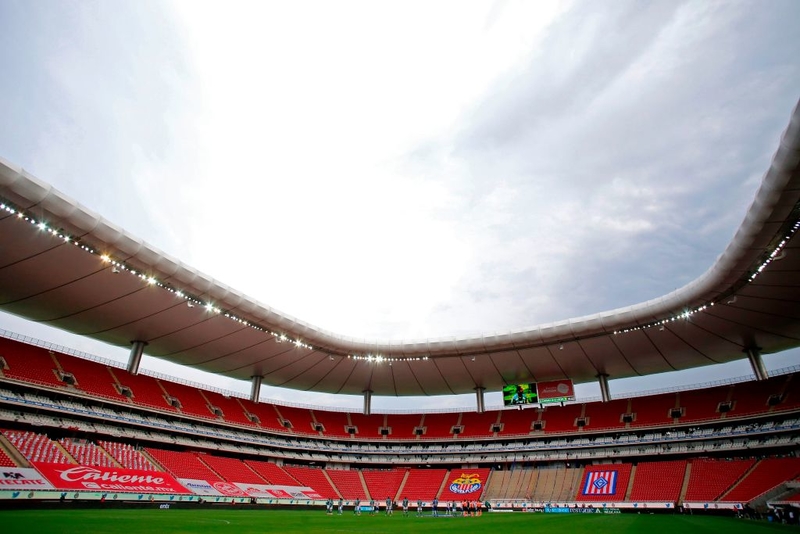
In 2009, sadly, the Akron Zips moved to InfoCision Stadium-Summa Field, which was to become their new home! But let’s be real – it’s just not the same! Since then, the stadium has been vacant, occasionally hosting high school football games. Initially, after a company acquired the stadium, there were plans to overhaul it and base it as the home for a professional football team. But in 2017, the stadium was condemned, with partial demolition commencing in June 2018. Fun fact: the Rubber Bowl had hosted Bon Jovi, Tom Petty, Bob Dylan, and others!
Maple Leaf Gardens (Toronto, Canada)
The historic building which has seen some of the greatest hockey matches on ice, ever, is none other than the Maple Leaf Gardens. Considered one of the “cathedrals” of the game, it was home to the Toronto Maple Leafs of the National Hockey League from 1931 to 1999. Fun fact: it was one of the few venues outside of the United States where Elvis Presley performed in concert, back in 1957! Over the years its housed many teams and held many fans, as well as hosting game 2 of the world-famous Summit Series where Team Canada faced off against the USSR!
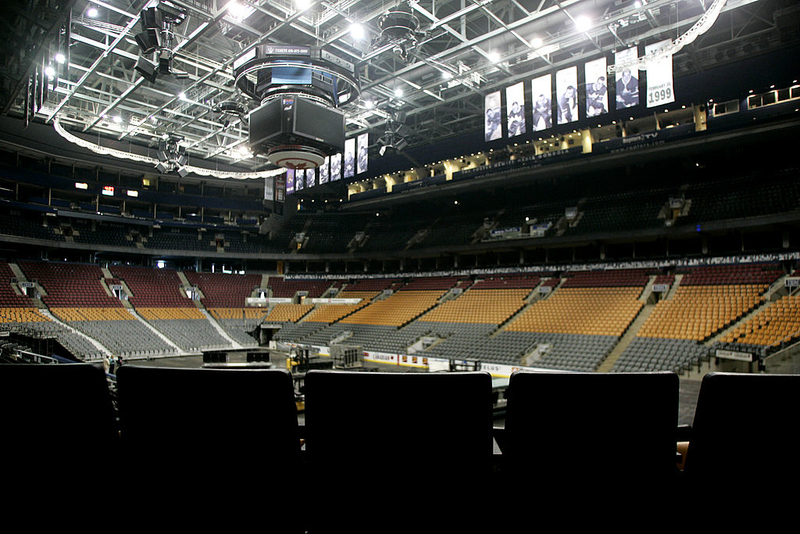
In 1999, Maple Leaf Gardens closed, when the NHL’s Maple Leafs moved to the Air Canada Centre and was sadly left alone for a number of years. However, in 2011, it was reopened to the public, though there seemed to be more foodies than hockey fans – due to the reopening constituting the installation of a retail center and eateries! At least this wasn’t an abandoned waste of money!
Stadion Za Lužánkami (Brno, Czech Republic)
Currently inactive, and clearly overcome with weeds, the Stadion Za Lužánkami was in fact built back in the 1950s, used for football, and acted as the home ground of FC Zbrojovka Brno. During the 60s and 70s, the 50,000 pax stadium was the biggest in Czechslovakia! In 2001 however, the stadium was closed after 1. FC Brno moved to a new home. According to FIFA criteria, the stadium was no longer suitable, and the club was thus, forced to move.

Sitting idle, there were plans to renovate the stadium and see the possible return of the much-loved football club. In 2012 however, it was announced that funds were lacking – as a result, these financial concerns put the reconstruction plans on hold. The stadium fell further into disrepair. That was until FC Zbrojovka Brno captain Petr Švancara, took things into his own hands, and via crowdfunding, managed to restore the stadium so that he could play a farewell game! Due to the success, the FC’s youth team train at the stadium – apparently there are concrete plans for a massive $48 million US overhaul. So this one; not such a sad, lonely story after all!
Montreal Olympic Park (Montreal, Canada)
Ah, oui, Stade Olympique is well, still open! But it makes our list because it hasn’t actually had a main tenant since 2004! The multi-purpose stadium made headlines for hosting the 1976 Summer Olympic Games in Montreal. Nicknamed “The Big O” (get your mind out of the gutter!), the doughnut-shaped stadium also was nicknamed “The Big Owe” due to the astronomical cost, as well as the Games in general! Canadians. Eh.
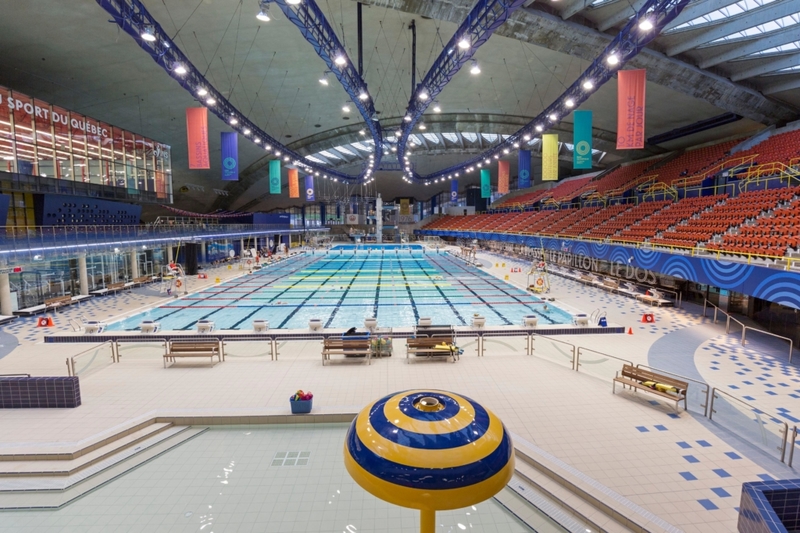
Despite being… snowed under by the debt from the games, it’s interesting that at the time, many nations boycotted these games – which wasn’t a good thing, leading to more politics and less competition. Let’s go back to the budget – the stadium had a total cost (and was in fact, unfinished) of C$1.1 billion!! And that was in the 70s. That’s a heck of a lot of dollars. In mid-November of 2006, the debt owed was finally repaid – almost 30 years after it opened. It’s total cost? C$1.61 billion – making it the second most expensive stadium, beaten only by Wembley Stadium in London!
Buffalo Memorial Auditorium (Buffalo, New York, USA)
Located in Buffalo, New York, the Buffalo Memorial Auditorium, or “the Aud” (look, we don’t know who came up with that nickname but clearly creativity wasn’t their strongest suit) was opened 80 years ago, in November of 1939. During the 40s, the Auditorium hosted teams from the AHL, NHL, NBA, MSL, MILL, NPSL, and RHI. (Yes, off you go, google what those acronyms stand for!)
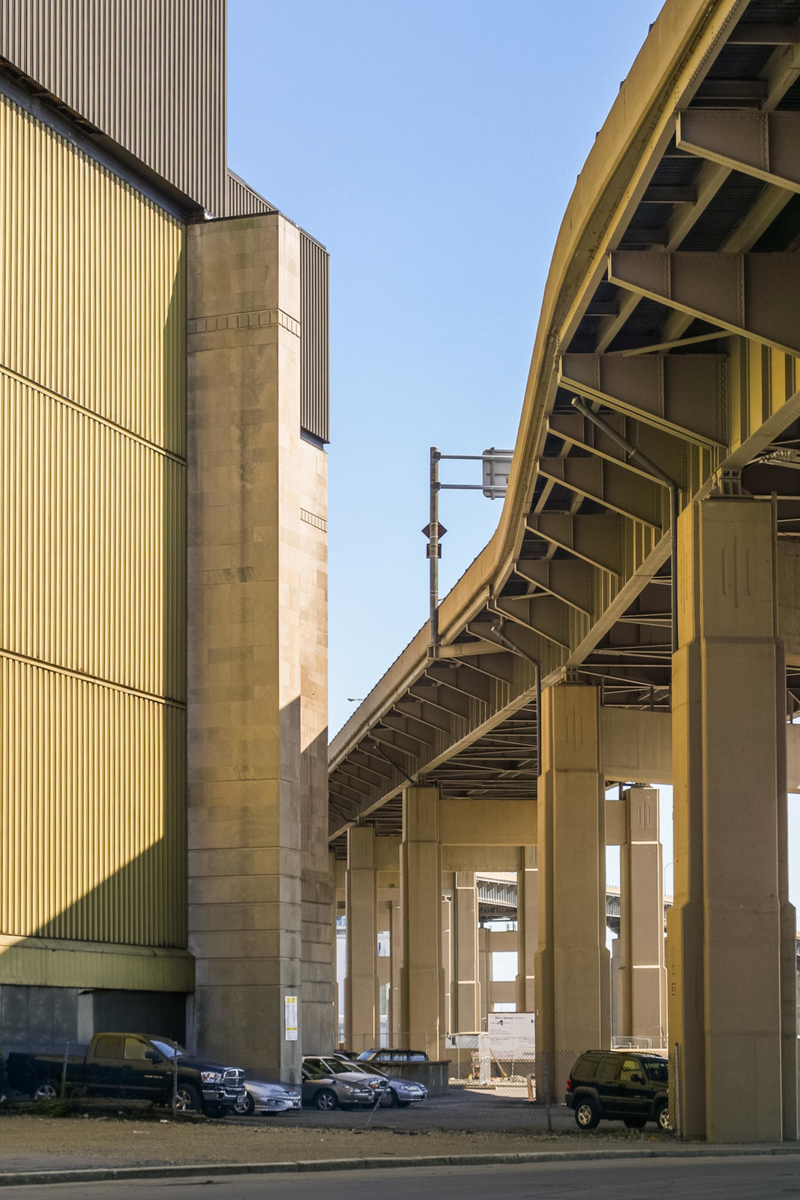
In 1970 the auditorium underwent some renovations and was home to the Sabres between 1970 and 1996. Despite hosting concerts and events such as Disney on Ice, there just wasn’t enough interested fans who wished to attend events the Auditorium held. It closed in 1996 after the sporting teams’ seasons all ended, and remained vacant and well, abandoned. It was sadly demolished in 2009, though a lot of work had been done for the demolition crew already – the venue had been vandalized and looted to the extreme.
Robert F. Kennedy Memorial Stadium (Washington D.C., USA)
Ok ok, so this one might still be technically operational, but we’ve got a feeling that the District of Columbia may want to demolish and repurpose the land it’s occupying. Operated by Events DC, the venue is in fact under a lease that runs until 2038 from the National Park Service (they own the land) – so maybe they won’t sell up… we’ll check back in, in 20 years’ time! Heh. But check that aerial – RFK, Capitol Building and Washington Monument. It’s like the political Bermuda Triangle; wonderful for a politics student to get lost between them. Despite the cool geographical situation, there was a serious problem at RFK: the losing streak it somewhat caused for the Redskins between 1961 and 1996.
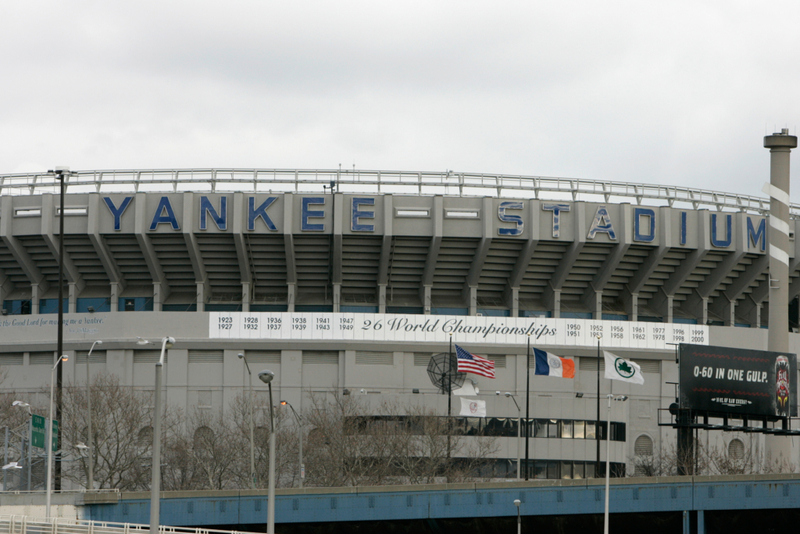
The home base all those years, it was occupied by the Nationals for two years as of 2005. Wow, 2005 is 14 years ago. Stick that in your pipe and smoke it. One of the first major stadiums designed to host both baseball and football, its signature “cookie-cutter” design was a first for American architects. Aside from baseball and football matches, RFK Memorial Stadium also hosted NFC Championship games, MLB All-Star games and American friendlies and World Cup matches. Not to mention boxing matches, a cycling race, marathons, concerts and a Le Mans auto race! Talk about multi-purpose.
Tiger Stadium (Detroit, Michigan)
First cab off the rank is Tiger Stadium, located in Detroit Michigan. The home of The Detroit Tigers, it cost $US300,000 back in 1911 (which in 2018 dollars, is almost $8 million)! Between 1912 and 1999, the stadium was the home of the Detroit Tigers of Major League Baseball, along with the Detroit Lions of the National Football Team between 1938 and 1974. In 1975 It was declared a State of Michigan Historic Site – so it’s pretty special!
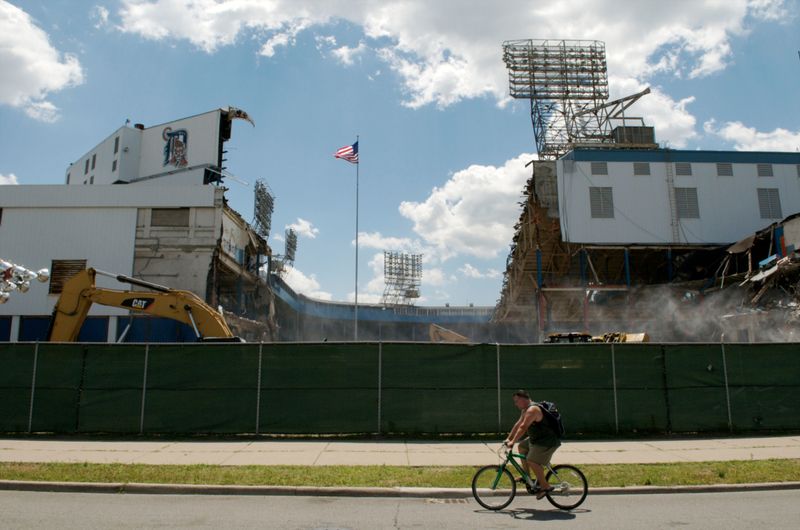
The last game for the Tigers was held in 1999, and following this final match, there was a ping-pong match of redevelopment vs demolition, for 10 years! Eventually, the stadium couldn’t survive its ultimate fate of demolition, which occurred in 2009. The Tigers since moved to Comerica Park, and in 2018, the original site was redeveloped to host youth sporting activities. Hey, at least it was repurposed in the end!
Avanhard Stadium (Pripyat, Ukraine)
Well, when you look this place up on the map, or on the internet, there really isn’t much. Certainly adds to the eerie, spooky demeanor of the place! The Ukrainian Avanhard Stadium has long been abandoned, situated in Pripyat. The home ground of Ukrainian Football Club FC Stroitel Pripyat, there is a bit of a story as to why Avanhard has left an abandoned shell. Opened in 1979, the stadium was around for just under 7 years, before a massive nuclear disaster occurred mere kilometers away. Recently, the miniseries, Chernobyl details the Ukrainian catastrophe and the massive conspiracies surrounding the area. Pripyat, which sits inside the Exclusion Zone surrounding Reactor Number 4, the worker’s city was abandoned to the nuclear fallout which was, in fact, a hundred times more lethal than the bombs dropped on both Hiroshima and Nagasaki.
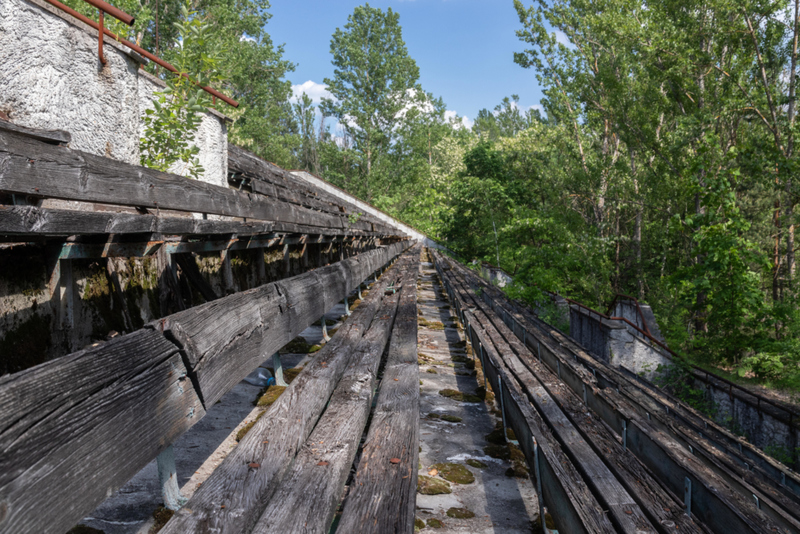
The necessity for the stadium came from the 50,000 strong town’s youth and want to watch sport! Like many USSR-formed football teams, the team of Pripyat was formed out of a group of workers, or “stroitel” which means “builder” in Russian! On April 26, 1986, it was reported that FC Mashinostroitel (a superb name construction, really, bless them) were preparing to leave for Pripyat, before a helicopter landed on their training field, with an officer informing them “you’re not going to Pripyat tomorrow.” After Chernobyl, no football team would ever play in Pripyat again.
Roman Coliseum (Rome, Italy)
Colosseum, Coliseum, it really depends on what you prefer. Known also as the Flavian Amphitheatre, the Anfiteatro Flavio is an oval amphitheater in the center of Rome. Built out of limestone, it is today, one of the most visited tourist attractions in Italy, and even the world! Welcoming roughly 4.2 million tourists a year (though last year saw record numbers of 7.4 million!), the Coliseum is a defunct sporting arena, which hosted gladiatorial games. The spectacles which ensued included the famed gladiator duels – which men fought beasts and one another to the death.
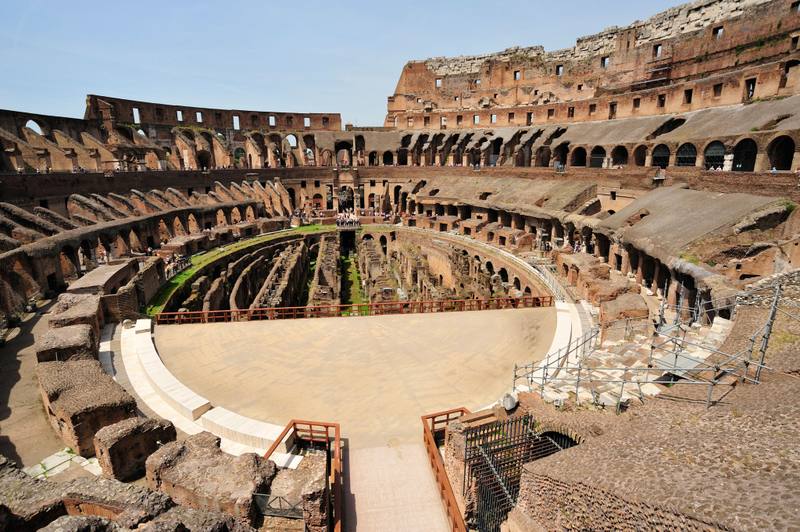
For its time, the Coliseum was a feat of engineering, particularly when you look at the size of the construction and how many people it could hold: an estimated 50,000 to 80,000 spectators, averaging 65,000 in the audience! Did you know that it even hosted naval warfare games – it could be flooded and filled with water! An iconic symbol of Imperial Rome, it is listed as one of the New 7 Wonders of the World. Sure, much of the structure has been destroyed, but having been built back in 70-80 AD, that is a marvel in itself, that it is still standing. A true testament to the great architects and engineers of the time. If you’re ever visiting Rome, make sure to visit, and just circle the perimeter so you can get an idea of just how massive it is!
Olympic Stadium Kosevo, (Sarajevo, Bosnia)
The Bosnian War was devastating. Taking place between 1992 and 1995, the war saw the forces of the Republic of Bosnia and Herzegovina battling Bosnian Serb and Bosnian Croat entities, which were backed by their respective home countries. The conflict saw over 100,000 dead and the first genocide in Europe since WWII. Now that you’ve had your history lesson for the day, let’s look to a stadium that was caught in the middle.
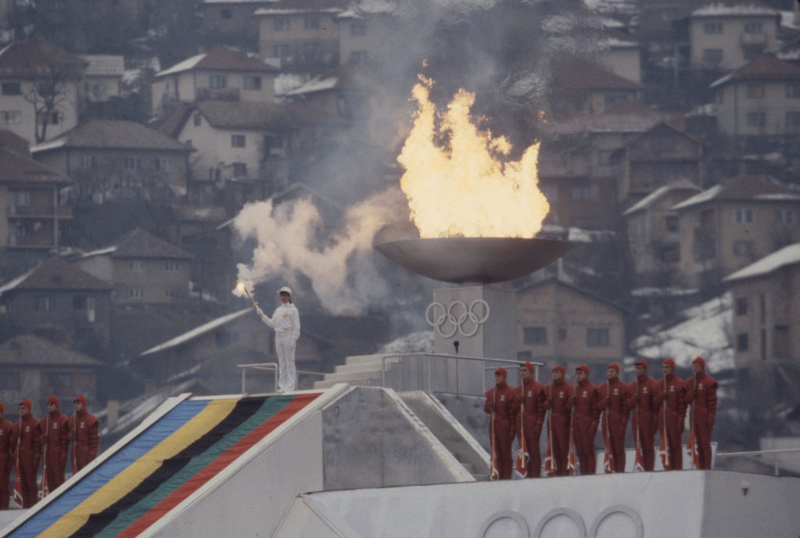
The field, which now is marked by hundreds of gravestones from the war, was, in fact, a venue for the 1984 Sarajevo Olympics. The stadium, which is pock-marked with bullets and missile-blasted debris, is a silent reminder of the hard times which passed through the area. At one point it held some of the world’s greatest athletes, a great contrast to today, where it sits looking forlorn, abandoned and pretty damn depressing.
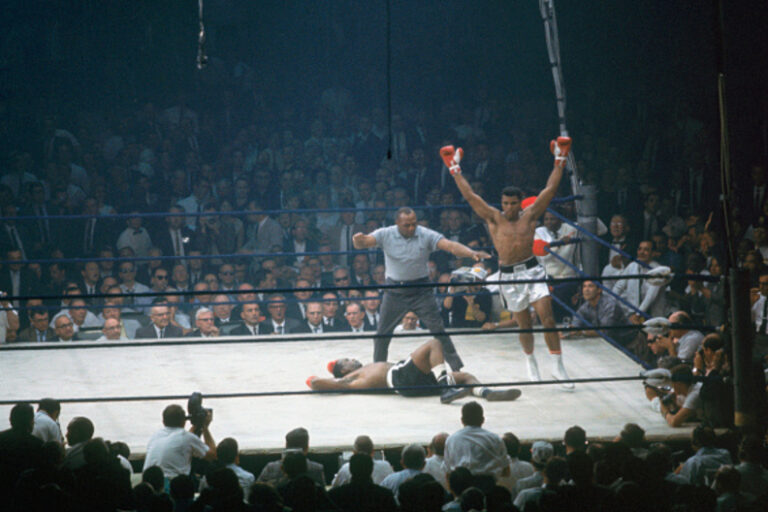
More of the Most Epic Sports Moments Ever Caught On Camera

What Is Former WWE Diva Devin Taylor Doing Today?

Whatever Happened To The Fab Five's Ray Jackson?

What Johnny B. Badd Has Been Doing Since Retiring From Wrestling
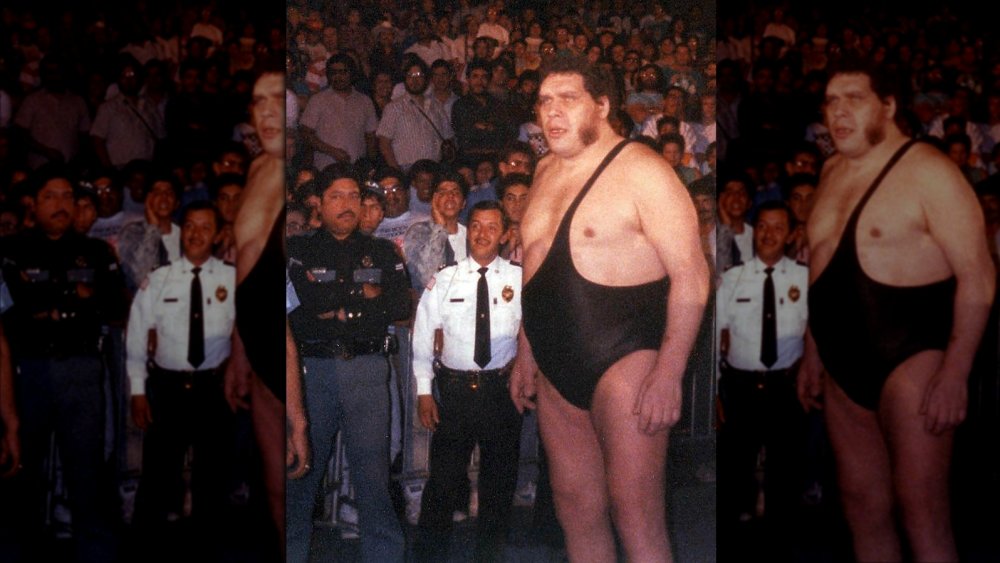
What Really Happened When Andre The Giant Wrestled Akira Maeda

The Truth About Randy Savage's Rap Career
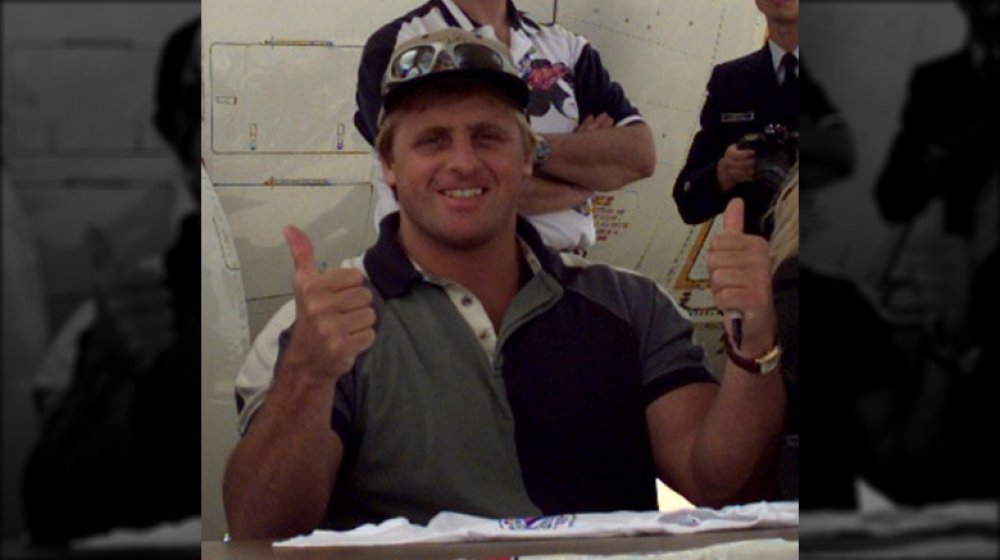
The Tragic, In-Ring Death Of Owen Hart

The Real Reason Olympians Started Biting Their Medals

What Players Really Do During The Super Bowl Halftime Show

Bizarre Ways Athletes Celebrated Their Contract Signings
